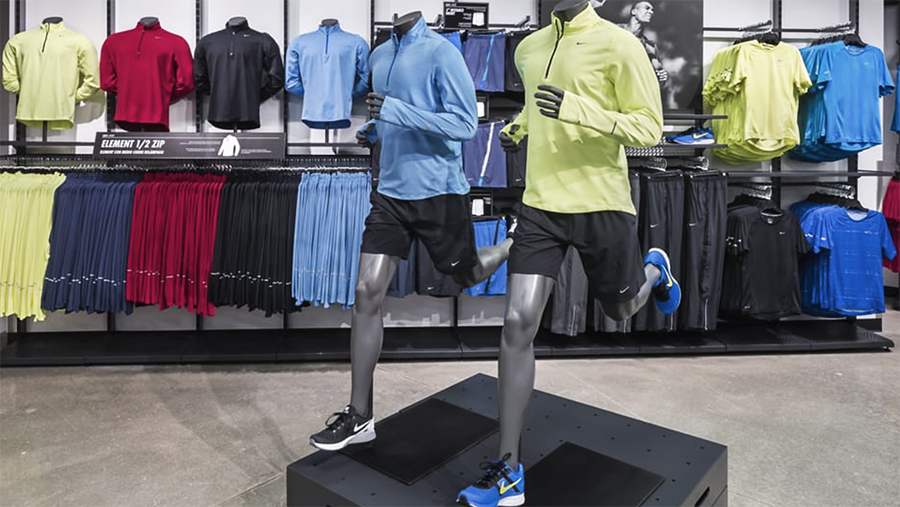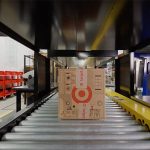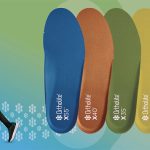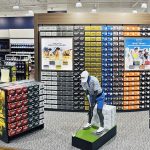Retail sales reversed their downward trend in July as Amazon Prime Day and major promotions at other retailers prompted increased shopping while wage increases gave consumers more money to spend, according to the National Retail Federation’s initial assessment of the July retail sales report from the U.S. Census Bureau. But an increase in the July inflation numbers and a year-ago July decline could also be at the core of the increase, according to analysts.
The U.S. Census Bureau reported that overall retail sales in July were up 0.7 percent from June and up 3.2 percent year-over-year, double the increases in June when sales were up 0.3 percent month-over-month and up 1.6 percent year-over-year.
“The increase in July may be a nice indicator of the health of the consumer and how that affects the U.S. economy, but purchasing was essentially flat when you take into account the inflation rate,” offered James Hartford, principal and chief analyst at the retail tracking firm SSI Data. “The retail sales increase in July certainly reflects, at some level, the fact that the Consumer Price Index ticked up in July to 3.2 percent year-over-year in the U.S., the first increase in more than a year, and that occurred even as retailers and vendors promoted footwear and apparel heavily to liquidate excess inventory.”
Hartford also pointed to the fact that in the areas of focus most closely tracked by SSI Data and SGB Media subscribers, Circana reported that unit sales were down for the month based on retail point of sale and other tracking data.
U.S. retail sales revenue, both discretionary general merchandise and consumer packaged goods (CPG), increased 2 percent compared to the same month last year, according to data from Circana. The company said unit sales declined 2 percent for the month.
“Inflation still plays a role. Consumers, on the whole, are still spending more to get less,” wrote Nikki Baird, vice president of strategy at retail technology company Aptos, in an analyst note regarding the CPI report. “But even with rising debt and high interest rates, July did not appear to see any blanket pullback from consumers, which may not come until student loan payments resume in September.”
“Despite the increase for the month, this is not necessarily a healthy retail environment for consumers,” added Hartford. “The consumer may be able to get some deals as retailers look to liquidate and de-stock inventory, but the price increases over the past two years offsets most of that upside. Not only are unit sales down, but most CPG and food products are now sold in smaller packaging or less volume, some as much as 20 percent less, requiring more frequent purchasing.”
Circana noted that discretionary general merchandise spending declines continued in July, with a 4 percent decline in dollar sales and a 7 percent drop in unit sales compared to last July. The company said CPG spending remained elevated, with 4 percent growth in food and beverage and a 3 percent increase in non-edible revenue. Still, elevated prices’ impact on demand was “evident” in CPG, with unit sales falling 1 percent and 3 percent, respectively, across edible and non-edible segments.
“Retailers and manufacturers need to find the trigger points that will motivate the consumer to start to spend, despite reprioritization and the various economic challenges they are facing,” said Marshal Cohen, chief retail industry advisor for Circana.
Overall, discretionary general merchandise spending declines continued into the first week of August with another 5 percent year-over-year decline in sales revenue and an 8 percent drop in unit sales, according to Circana.
“The established shifts in consumer spending behavior are resulting in a delayed start to the back-to-school shopping season. This first week of August is traditionally a peak back-to-school shopping week, but, instead, sales revenue of back-to-school general merchandise took a dip, falling below last year and pre-pandemic 2019 levels,” the company said.
“Consumers are holding off on making some of their purchases, which will cause more back-to-school retail sales to occur after the traditional shopping period,” said Cohen, who sees more sales hitting in late August, September and even October.
NRF’s calculation of retail sales, which excludes auto dealers, gas stations and restaurants to focus on core retail, showed July was up 1 percent seasonally-adjusted from June and up 3.8 percent unadjusted year-over-year. In June, sales were up 0.3 percent month-over-month and up 3.2 percent year-over-year.
NRF’s assessment said that the July CPI numbers were up 3.9 percent unadjusted year-over-year on a three-month moving average as of July and up 4 percent for the first seven months of the year.
“July retail sales show consumers continue to drive the economy through this period of economic pressure with robust spending supported by steady job growth and wage gains,” said NRF President and CEO Matthew Shay. “Retailers remain focused on providing essential items at competitive prices for families and students as we approach the end of an expected record back-to-class shopping season.”
NRF Chief Economist Jack Kleinhenz believes retail sales growth has been slowing, but July got a mid-summer boost from special deal days offered by retailers.
“Households had a positive response, and the pace of sales was clearly helped, more than doubling the previous monthly gain,” Kleinhenz observed. “The data shows the ongoing resilience in consumer spending and how it is fueling the overall economy. It’s worth noting that the strong year-over-year gain came partly because sales accelerated this July but were decelerating at the same time last year.”
Hartford cautioned that what might look like a good deal and great bargain for consumers now may lead to sticker shock down the road.
“The impact of heavy discounting, promotions and inventory destocking at retail is being felt through the entire supply chain to the factory floor and component companies,” explained Hartford. “Companies are using staffing cuts and other expense reductions to counter the lower margins caused by lower selling prices and rising input costs. When the inventory clears at retail and pieces start to rise again as companies work to get back on track, the consumer will expect to foot the bill for discounts over the last year. When that bill comes due, it will be difficult to keep inflation in check, particularly in the discretionary sector.”
NRF said July sales were up in five out of nine retail categories on a yearly basis, led by online sales, health and personal care stores and general merchandise stores, and up in all but two categories on a monthly basis.
Specifics from key sectors analyzed by the NRF include:
- Online and other non-store sales were up 1.9 percent month-over-month, seasonally adjusted, and up 11.8 percent unadjusted year-over-year.
- Sporting Goods Stores were up 1.5 percent month-over-month, seasonally adjusted, but down 0.5 percent unadjusted year-over-year.
- Clothing and Clothing Accessory Stores were up 1 percent month-over-month, seasonally adjusted, and up 0.9 percent unadjusted year-over-year.
- General Merchandise Stores were up 0.8 percent month-over-month, seasonally adjusted, and up 1.6 percent unadjusted year-over-year.
- Electronics and appliance stores were down 1.3 percent month-over-month, seasonally adjusted, and down 3.5 percent unadjusted year-over-year.
- Health and personal care stores were up 0.7 percent month-over-month, seasonally adjusted, and up 8.3 percent unadjusted year-over-year.
- Grocery and beverage stores were up 0.8 percent month-over-month, seasonally adjusted, and up 1.5 percent unadjusted year-over-year.
- Building materials and garden supply stores were up 0.7 percent month-over-month, seasonally adjusted, but down 3.5 percent unadjusted year-over-year.
- Furniture and home furnishings stores were down 1.8 percent month-over-month, seasonally adjusted, and down 7.6 percent unadjusted year-over-year.
Photo courtesy Charlotte Outlet Mall/Nike
















